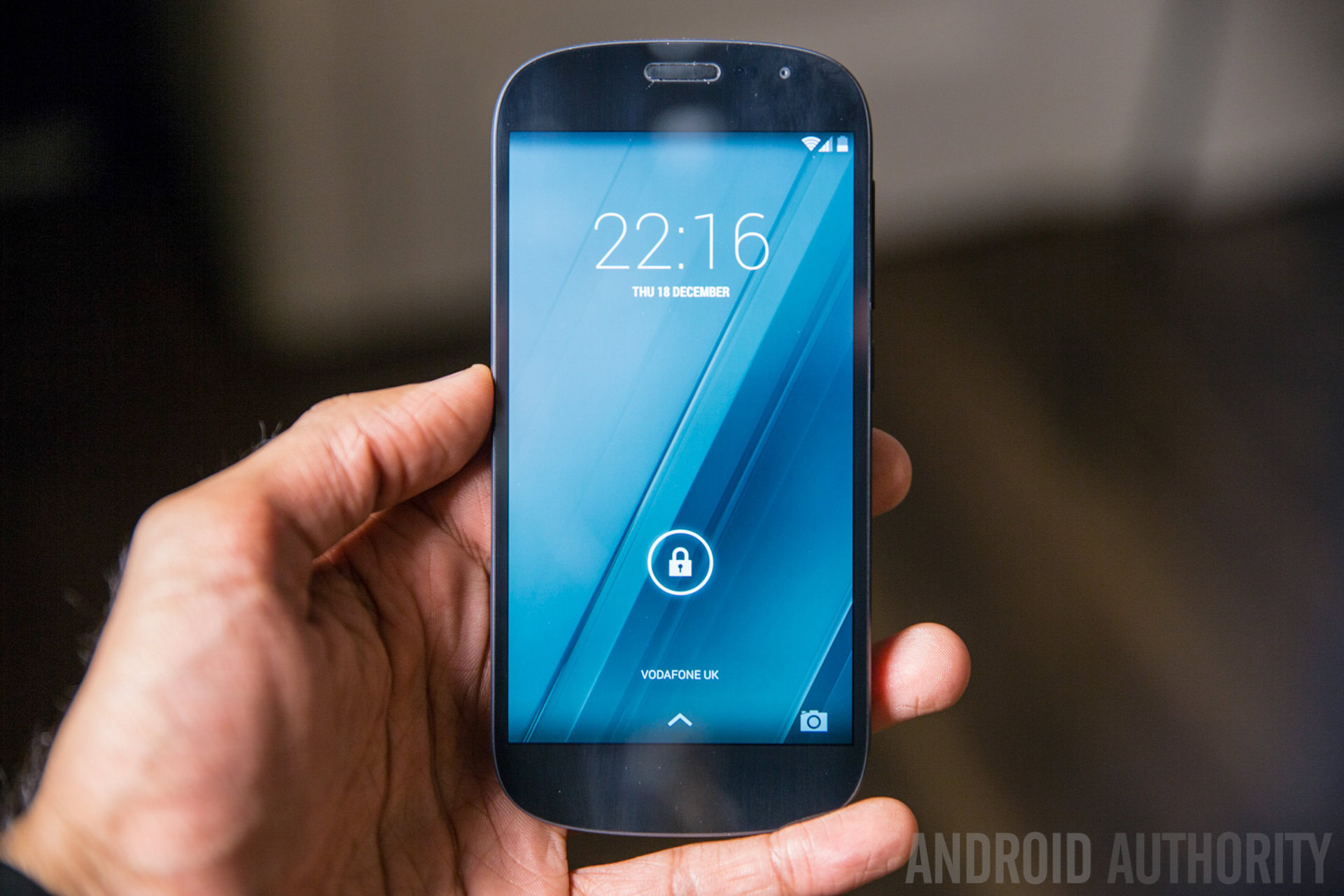Affiliate links on Android Authority may earn us a commission. Learn more.
YotaPhone drops Android for Sailfish OS
Published onJuly 4, 2015

You may not have heard of them but Yota is a Russian company who dared to be different with their YotaPhone 2 smartphone. While most manufacturers tend to stick to tried-and-tested designs, Yota took a risk with the YotaPhone 2 and if you somehow haven’t heard of it, the dual-screen smartphone was one of the most unique Android devices ever made.
The main feature of the YotaPhone 2 is the E-Paper Display (EPD) on its rear; a 4.7-inch 960×540 pixel E-Ink panel dominates the rear cover of the smartphone and using features like YotaPanel and YotaCovers, Yota made the EPD pretty useful. One benefit of the EPD was the ability to run any Android application on the display (instead of on the main display) but if you were hoping for the next version to also run Android, it looks like you might be out of luck.
In a bid to retain its “being different” tag, Yota has announced plans to drop Android from future smartphones in favour of a switch to Sailfish OS, a Finnish platform that has its roots in Nokia’s abandoned MeeGo OS. According to Yahoo News, Yota was deciding between Sailfish and Samsung’s Tizen OS and opted for the former, representing a huge win for the Finnish company.
While Sailfish has slowly grown in popularity, Yota’s decision to switch from Android may prove to be a blessing or a curse; on the one hand, a partnership with Jolla would mean Yota can customise Sailfish to suit the YotaPhone more than they have been able to with Android but on the other, a lack of Android would mean less applications – although you can sideload Android apps – and less commercial appeal to customers.
The EPD on the YotaPhone 2 is designed to offer a grayscale experience with up to 16 levels of gray and an interface that includes dedicated widgets for stocks, weather and social networks. One of the key benefits of the EPD is the ability to use it as an e-reader and another is the potential battery life, with the EPD able to offer up to 100 hours of use from a single charge.
The other specs of the YotaPhone 2 include a 5-inch main AMOLED Full HD display with Corning Gorilla Glass 3 protection, a Snapdragon 801 processor, 3GB RAM, 32GB internal storage, an 8MP rear camera with Full HD video and a plethora of connectivity options. The 2500mAh non-removable battery isn’t the largest but the benefit of the EPD is that it can be used for battery-intensive applications such as maps and e-readers, which might use a lot of battery with a full colour display but consume much less battery on the EPD.
One of the biggest issues with the YotaPhone 2 is its €599 price tag in Europe, which hasn’t been subsidised by any carriers. With many customers opting to buy their phones as part of a contract instead of outright, the lack of carrier support has proven to be a challenge for Yota. Whether a switch to Sailfish will attract carriers remains to be seen but of course, we’ll bring you the information as soon as we have it.